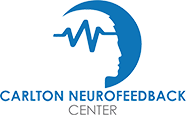Neurofeedback is a subspecialty of applied neuroscience that has been around since the 1970s and even earlier by some accounts. It is a form of biofeedback that takes a comprehensive approach to training the brain to regulate itself more efficiently. This holistic approach can result in better sleep, balanced moods, emotional resilience, improved attention, and peak performance. Neurofeedback relies on the brain’s ability to learn and create new connections—its neuroplasticity—to operate at a higher level for someone at any age. The following are some of the biggest misconceptions and facts about neurofeedback or Neurotherapy.
Neurofeedback is an invasive type of intervention.
No, it isn’t. Neurofeedback is a type of brain training that rewards your brain for learning to organize its brainwaves more efficiently. After assessing your symptoms and/or specific performance goals, a qEEG (Quantitative Electroencephalogram) or brain map will be done. This involves wearing a cap with a few electrodes attached to your scalp to record a baseline of the electrical activity in your brain so a custom brain training protocol can be created. A typical 30-minute session thereafter involves relaxing in a comfortable chair with electrodes attached to your scalp to monitor brain waves, and the training protocol can begin. As you watch and listen to a video, the sound and picture may fade in and out as your brain learns how to perform optimally. When learning the right connections, your brain is rewarded with a video that is easy to see and hear.
Neurofeedback feeds electricity to my brain and uses electrodes to influence my brain waves.
No, that is not how it works. The electrodes that are attached to your scalp monitor your brain waves. They do not emit electrical signals to change or influence brain waves. Much like electrodes attached to someone undergoing a sleep study to monitor their stage of sleep, these temporary electrodes monitor the unique electrical current your brain is generating and watch for turbulence and areas of imbalance.
I can learn how to change my brainwaves using neurofeedback consciously.
No. Do not expect to be able to consciously change your brainwaves on command after a regimen of Neurotherapy. Your brain is learning, so you will not know exactly how it is accomplishing its training. A good example is when you learn to keep your balance when riding a bike. There isn’t a specific switch to turn on to learn to keep your balance, but over time, your brain learns, and then, one day, it is as if balancing on two wheels was a skill you had all of your life.
A brain map or qEEG might read my mind or influence me with subliminal messages.
No. Neurofeedback is accomplished by training your brain to better regulate itself by monitoring external brain waves. It cannot interpret these signals as thoughts, memories, dreams, or feelings. Your thoughts, dreams, memories, and emotions remain your private domain. This type of training protocol uses operant conditioning and reward-based training. Subliminal messages are not used for this training.
Neurofeedback therapy will change my personality.
No. Neurofeedback does not change who you are, your thoughts, or your memories. We do have patients tell us they feel freer to be who they are without the symptoms they might have experienced before, such as fear, anxiety, impulsivity, or depression. We have witnessed patients with autism learn to communicate more effectively. We’ve seen patients who have suffered from Bipolar Disorder, Depression, and PTSD recover from the effects of those conditions or reduce their reliance on medication. Read more stories from patients we have treated by downloading our free eBook or seeing testimonials.
Learn More About Neurofeedback
Contact Dr. Ed Carlton at Carlton NeuroFeedback in Manassas, Virginia, for a free, no-obligation consultation, which you can schedule by calling (703) 335-9149 or online. As a practitioner and a patient himself, his personal experience with neurofeedback is one of the reasons he is so passionate about sharing how this modern technology can improve your performance and/or alleviate symptoms from a variety of brain-based conditions, including chronic stress, depression, and migraines to name a few. Do you like this series? Stay tuned for Part 2 and Part 3.


